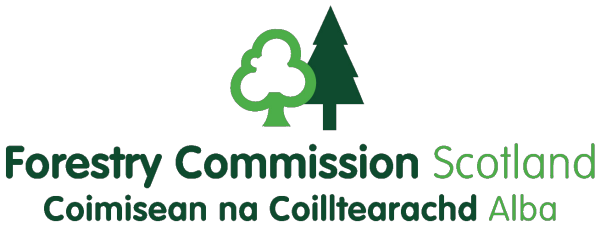Collaborating on an invaluable new service for Scottish landowners
A new Land Information Search service has been launched in Scotland that helps landowners improve their management of the natural environment. Developed through the close collaboration of three public sector organisations, the online tool is expected to contribute to sustained cost savings through the closer collaboration of multiple government departments.
The Customer
This is a story about a successful collaboration between three Scottish public sector organisations working under the umbrella of Scotland’s Environment Web. The project was initiated by Forestry Commission Scotland, but could not have been achieved without with the input and commitment of its partners: Scottish Natural Heritage and Scottish Environment Protection Agency (SEPA).
Landowners can save time and complete more successful bids for woodland management grants
Government organisations can process funding applications more efficiently
The tool uses ArcGIS web services to stream up-to-date data directly from a variety of organisations
The Challenge
Across Scotland, a variety of grants are available to landowners to help them manage woodlands and plant new trees. However, in order to access this funding, individuals and groups have to complete formal applications, providing detailed information about their land, so that its suitability for planting can be fully assessed.
To assist landowners in this application process, Forestry Commission Scotland had previously developed a searchable database of land information. However, this application was now many years old and in urgent need of renovation. “We knew that we didn’t have the resources internally to update and redevelop our Land Information Search tool by ourselves, but we were very aware that it had the potential to deliver value to Scottish land managers right across the rural sector,” says Howard Davies, Geo-Information Services Delivery Manager at Forestry Commission Scotland. “We therefore approached our partners and proposed a collaborative project.”
All three organisations used the same GIS technology – Esri’s ArcGIS Platform – and it was this commonality that ultimately made it incredibly easy for the partners to collaborate on the creation of the new Land Information Search (LIS) tool
The Solution
Each of the three organisations involved brought a different, complementary skill or asset to the initiative. SEPA had secured funding from the European Commission LIFE+ funding programme and created the Scotland’s Environment web site to provide a ‘one stop shop’ for all information about the natural environment in Scotland. It therefore had the ideal launch pad for the rejuvenated data service and the necessary underlying technical infrastructure. Scottish Natural Heritage was able to provide skilled programmers to help develop the solution; and Forestry Commission Scotland had the customer knowledge and business knowledge to lead the project.
Significantly, all three organisations used the same geographic information system (GIS) technology – Esri’s ArcGIS Platform – and it was this commonality that ultimately made it incredibly easy for the partners to collaborate on the creation of the new Land Information Search (LIS) tool.
Now available for anyone to use on the Scotland’s Environment web site, the new LIS service provides landowners with a fast and convenient way to access a vast amount of information about their land and neighbouring areas. Users simply enter a postcode or a place name, or zoom into the interactive map to find the area they are interested in. Next, they mark a point on the map or draw a polygon around the specific fields or areas that they want to plant or maintain. The online tool then returns a detailed report on land findings, which users can either view online or download as a pdf file.
Developed using ArcGIS web services, the online tool works by streaming relevant, up to-date data directly from a wide variety of different organisations. Searches are currently performed against over 40 different data sets, ranging from recent woodland surveys and forestry boundaries to Sites of Special Scientific Interest and groundwater reports. If users click on the ‘more details’ button on their individually created search results reports, they are automatically directed to web sites with further information. So, for example, if an Iron Age burial mound is found near the search area, users can go directly to information about this scheduled monument on the Historic Scotland web site with just one click from their reports.
The new Land Information Search service delivers considerable benefits for landowners and managers, making it far easier for them to maintain Scotland’s beautiful and invaluable rural environment
Howard Davies – Geo-Information Services Delivery Manager, Forestry Commission Scotland
The Benefits
Through their collaboration, Forestry Commission Scotland, Scottish Natural Heritage and SEPA have succeeded in delivering a highly valuable and enhanced service for landowners. LIS currently attracts around 1,000 users per month, a figure that is expected to peak next year when new grant applications are invited for the next round of Scotland’s Rural Development Programme (SRDP).
For landowners applying for SRDP for example, the new LIS tool will save them an enormous amount of time. They will be able to find a great deal of the information they need to complete their funding applications in one place and have confidence that this data is up-to-date. “The new Land Information Search service delivers considerable benefits for landowners and managers, making it far easier for them to maintain Scotland’s beautiful and invaluable rural environment,” Davies says.
In tandem, the government organisations that administer rural funding applications will be able to operate more efficiently. It is anticipated that the quality of applications will be higher, saving time asking landowners to submit more information or pointing out information that materially impedes the feasibility of landowners’ plans. In the long term, these internal efficiency gains may translate into cost savings across multiple government organisations.
Although it was originally developed to support woodland management and tree planting, the LIS tool can now add value for a wide number of different users. Farmers and moorland managers for example, will now be able to use the service to access information pertinent to their development plans.
The remarkable thing about this project is that it is delivering exceptional benefits, but was created with minimal investment through the LIFE+ programme. Together, the three partners already had all the ArcGIS technology, skills, IT infrastructure and indeed, vision to build this valuable new public service. Davies claims: “It’s a great example of successful cross-government collaboration in Scotland.”



